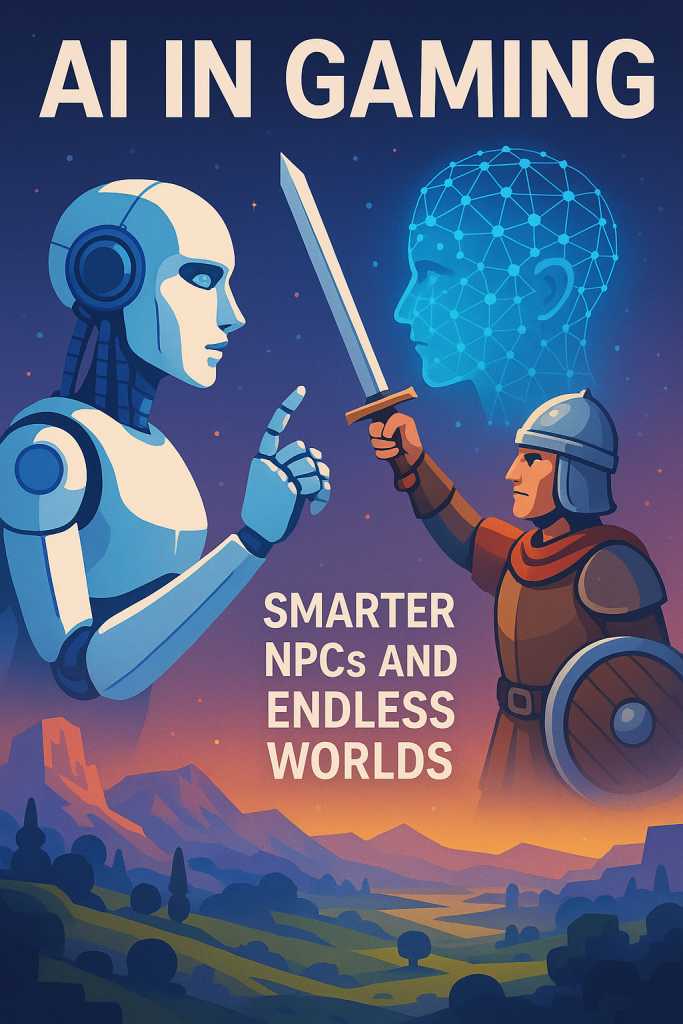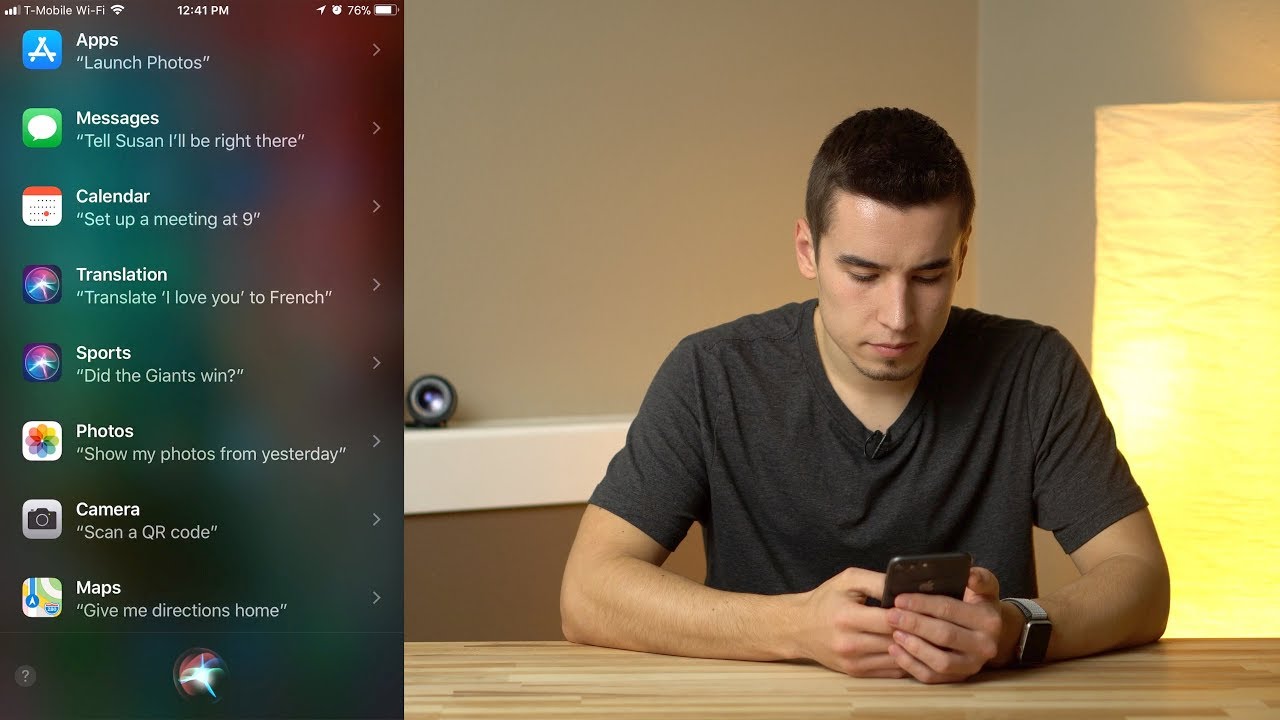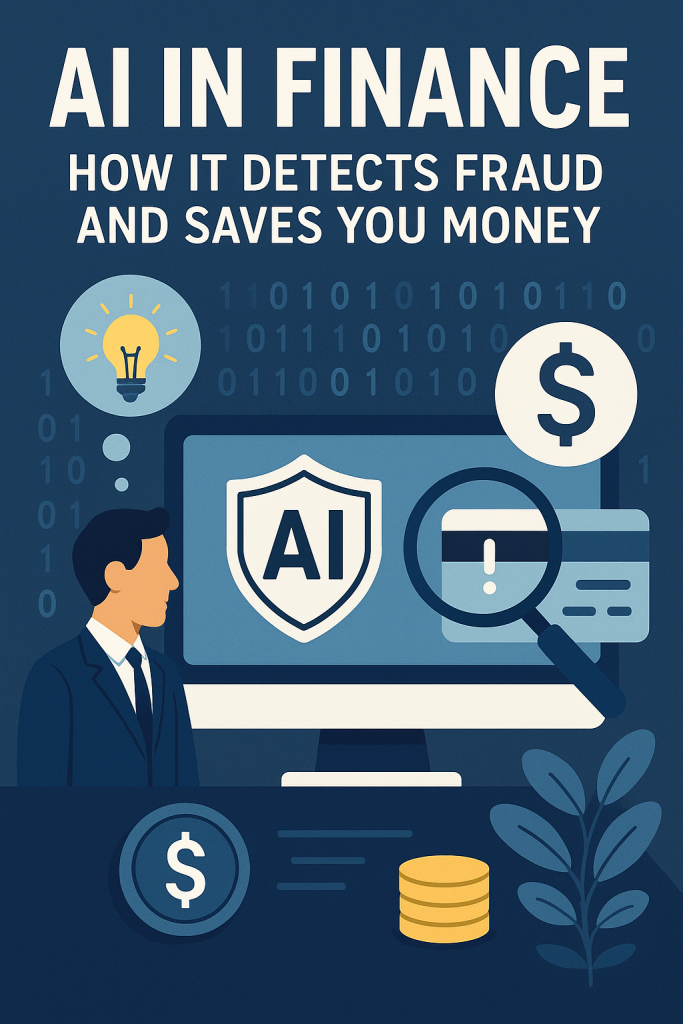If you have ever played a video game, you know the fun comes not only from winning, but from the story, the characters, and the world around you. Today, artificial intelligence (AI) is making games feel more alive than ever before. Characters act smarter, the worlds keep expanding, and the experience can even change based on how you play.
This article explains how AI is shaping modern games in plain, beginner-friendly terms. You will also find step-by-step examples you can try at home, even if you are not a tech expert.
Table of Contents
Key Takeaways
- Smarter NPCs (non-player characters): Characters now respond in natural and surprising ways.
- Endless worlds: AI builds new landscapes as you explore, so no two adventures are the same.
- Personalized play: Games adjust to your skill level and choices.
- Try it yourself: Simple steps let you explore AI-powered games at home today.
- The future: Expect games that feel like living worlds that respond to you.
Smarter NPCs: Characters That Think for Themselves
In older games, NPCs (non-player characters) followed scripts. They might repeat the same line every time you spoke to them. This could make the world feel flat and predictable.
With AI, NPCs can now react to the world around them:
- Villagers may gossip about things you did earlier in the story.
- Enemies might work together, surrounding you instead of charging head-on.
- A shopkeeper might give you discounts if you help their family, or charge more if you act rudely.
This makes the game feel like the characters have real memories and personalities.
Example in real games: In Skyrim, townsfolk comment on your past adventures. In newer projects, game studios are even experimenting with chatbot-style NPCs, so you can hold full conversations instead of just choosing from a menu of dialogue options.
Try It Yourself: Talk to Smarter NPCs
- Choose a game with advanced NPCs. Try Skyrim or Red Dead Redemption 2 for lifelike character reactions.
- Experiment with actions. Be helpful in one playthrough, and troublesome in another. Notice how characters respond differently.
- Look for mods. If you play on PC, search for “AI NPC mods” for games like Skyrim. Some allow deeper conversations powered by AI chat systems.
This simple experiment shows how AI makes characters feel more alive.
Endless Worlds: AI Builds as You Play
In the past, game designers had to manually create every forest, mountain, and village. That took years of work. Now, AI can generate these features automatically as you play.
This process is called procedural generation. It uses rules and algorithms to create unique landscapes, so each player’s world is slightly different.
Famous examples:
- Minecraft creates never-ending terrain, from snowy mountains to deep caves.
- No Man’s Sky generates entire planets with unique animals, plants, and weather.
The magic is that even the game’s creators may not know exactly what you will discover.
Try It Yourself: Explore Endless AI Worlds
- Download Minecraft. The basic version is available on PC, consoles, and even mobile.
- Create a new world. Notice how every new game gives you a fresh landscape.
- Explore. Dig underground, climb mountains, or sail across oceans. The world keeps building itself as you go.
- Optional advanced step: Try No Man’s Sky for a full universe of AI-created planets.
You do not need technical knowledge to experience AI world-building. Just step into these games and start exploring.
Personalizing the Game for You
AI can also adapt games to your personal style. Instead of picking “easy” or “hard” at the start, the game learns how you play and adjusts in real time.
- If you are struggling, enemies may become a little less aggressive.
- If you are breezing through, puzzles may become harder.
- Storylines may branch in different directions based on your choices.
Example: In racing games like Forza Horizon, computer-controlled drivers (called “Drivatars”) learn from the way you drive. They make mistakes like humans and adjust to keep the race competitive.
Try It Yourself: Play a Personalized Game
- Pick a racing or adventure game. Forza Horizon (Xbox/PC) or The Last of Us Part II are good examples.
- Play a few rounds. Notice how the game reacts to your style—if you drive aggressively, AI drivers may do the same.
- Replay differently. Try playing cautiously or making opposite story choices. Watch how the AI shifts the experience.
This hands-on test shows how AI makes each game unique to you.
AI Behind the Scenes: Helping Developers
Players mostly see the fun side of AI, but game creators rely on it too. AI helps them:
- Test games: AI “bots” play through levels thousands of times to find bugs.
- Design worlds: AI suggests new outfits, weapons, or maps.
- Create voices: Instead of hiring dozens of voice actors, AI can generate realistic dialogue for background characters.
This means developers can build bigger and more detailed games in less time.
The Future of AI in Gaming
We are only at the beginning. In the next few years, expect games where:
- You can speak to NPCs as naturally as you talk to a friend.
- Every forest, village, or planet is unique to your playthrough.
- The game “remembers” your past choices and weaves them into future adventures.
In short, the line between a game and a living world will get thinner and thinner.
Final Thoughts
AI is quietly transforming video games. Characters are more lifelike, worlds are bigger and fresher, and stories can adapt to your personal choices. You do not need to understand the complex technology to enjoy it—just think of it as games getting “smarter” and more fun.
By trying games like Minecraft, No Man’s Sky, Skyrim, or Forza Horizon, you can experience these AI features yourself. Each time you play, you step into a new adventure shaped by intelligence working in the background.
So next time you pick up a controller, remember: that chatty villager, vast forest, or tricky puzzle might not just be pre-programmed—it could be powered by AI, making your journey one of a kind.













